New And Exciting Bahamas Bonefishing Trip
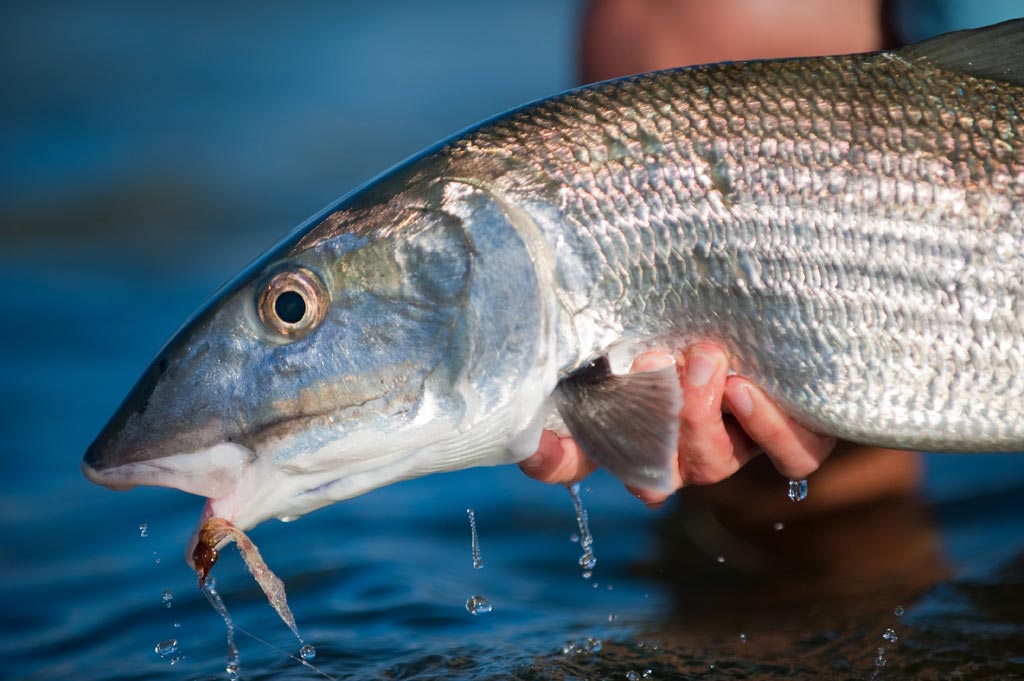
WITH ALL OF THE CONTROVERSY SURROUNDING THE BAHAMAS LATELY, I’M EXCITED TO SHARE SOME GOOD NEWS! I’LL BE HOSTING A TRIP TO THE FAMED ABACO LODGE, MARCH 15-22, 2016!
This week promises to be pretty amazing. The fishery surrounding Abaco is revered as one of the most productive bonefishing destinations anywhere, while also offering legitimate opportunities to catch permit and tarpon.
The Abaco Lodge sits right on the world famous Marls, a 400 square mile complex of flats that teams with bonefish and permit. They say you can fish the Marls your whole life and not see it all, but we’re not stopping there. The Abaco lodge trailers boats to the ocean-side flats where you’ll find some of the biggest bones in the Bahamas. It’s a diverse fishery with some amazing opportunities.
Awesome fishing isn’t the end of the story. The Abaco Lodge is a first class operation. Fine dining, shiny new Hell’s Bay flats boats, an infinity pool and even satellite TV. Everything you could ask for on and off the water. Easily accessible by direct flights into nearby Marsh Harbor. Abaco has a lot to offer and I’m excited to be hosting there.
I’ll be teaching my popular Bonefish 101 class plus fly tying, leader building and open discussion on any topic related to fly fishing. As always, I’ll be working with anglers one-on-one to shorten the learning curve and get you bonefishing like a pro.
Whether you’re new to saltwater fly fishing or an old hand you’ll enjoy the company of good, like-minded folks who love to fish and make new friends. G&G trips are an ego-free zone where all are welcome. Come enjoy the Bahamas with us!
Read More »18 Tips For Tying Better Streamers
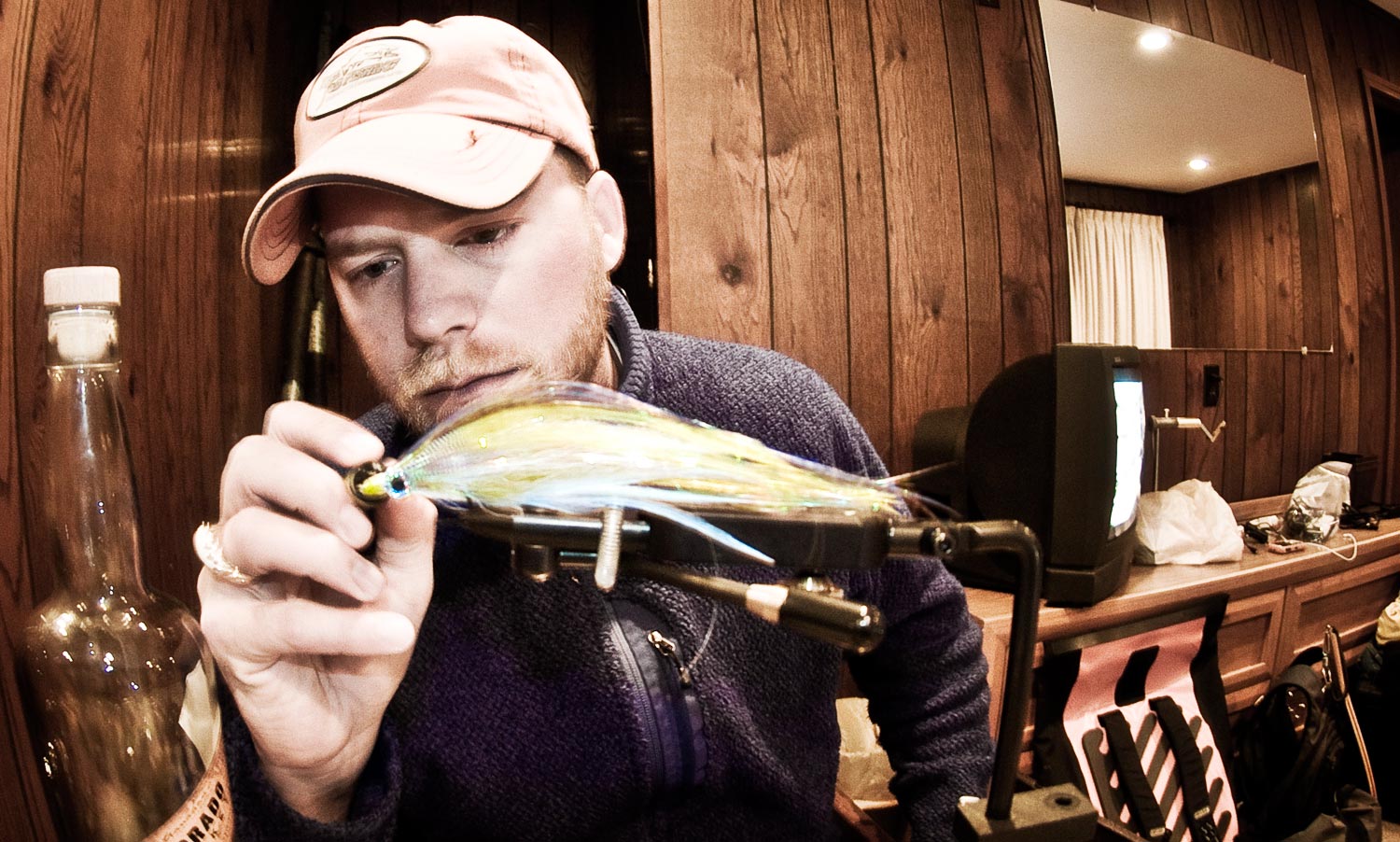
Once you start fishing streamers, you never go back.
If you are a streamer flinger, you know it the first time you tie one on. You huck and duck and strip and the next thing you know you’re spending long whisky fueled nights bent over the vise, building a mound of trimmings as big as your dog. There’s no way around it. You’re hooked.
Everyone who ever threw a streamer has their own theories about what works best. Opinions are strong and divided. Ask any number of “experts” the same question and you’ll get as many answers. That’s actually what I love best about fishing streamers. There are no rules. It’s the most creative form of fly fishing.
THAT SAID, HERE ARE 18 THINGS THAT THAT WORK FOR ME AT THE VISE. I HOPE THESE TIPS HELP YOU TIE BETTER STREAMERS AND CATCH MORE FISH.
1. Know your target species
Nothing is more important in fly fishing than making informed choices. That’s as important at the vise as on the river. Knowing the habits and preferences of your target species is the key to tying effective flies. Throw the recipes out the window and know your fish. Nothing beats actual experience, but if you’re chasing a new species there’s plenty to read and folks to ask. I’ll talk more specifically about those informed choices later in this article.
2. Know what your imitating
Not all streamers imitate specific prey, but many do. Knowing the habits and life stages of the food you are imitating will pay off big. Sculpins, for example, will dive into rocky bottoms to hide from trout. A front heavy sculpin pattern which will dive to the bottom when the retrieve is paused can be very effective. Some of the most productive streamers I’ve ever tied were patterned after baitfish I caught on the river. A little time spent sampling baitfish in your home water will be time well invested.
3. Think about action
Action may be my number one concern when I design a streamer pattern. They are all meant to move a certain way in the water. Many of my patterns are articulated with weight at the head. They jig and twitch and swim in the current. Some have long flowing materials that pulse and undulate in the water. Others dart from side to side or wiggle. The action of the fly should do two things. It should imitate some behavior of a prey species, usually in distress, and it should antagonize the hell out of your target species.
4. Get the size right
Size is a topic of great discourse among fly fishermen. There’s no shortage of bravado on both ends of the spectrum. In the end, it’s important to understand the choice you’re making when you tie a streamer of any size. Generally speaking, the larger the fly, the fewer fish it will catch and the larger those fish will be. That statement is riddled with inaccuracy but is fundamentally true. Big streamers do catch small fish and small streamers catch big fish but for every species there seems to be a sweet spot. A fly size that sets the bar at just the right height. This is a personal choice. For me, a trout streamer should be in the 3-4 inch range. Big enough to weed out the S.N.I.T.S. but small enough to pose as an easy meal to a wise old hog. A 20-inch trout is plenty capable of eating a 10-inch fish, but he will do so less often than he will eat a 4-inch fish. For a musky your fly may be 8 inches or larger. Know you target species.
5. Build bulk without extra material
Too many tiers think the answer to tying better streamers is in packing on material. More material does build a bigger profile but at a cost.
Sunday Classic / F-ing-A Yampa!
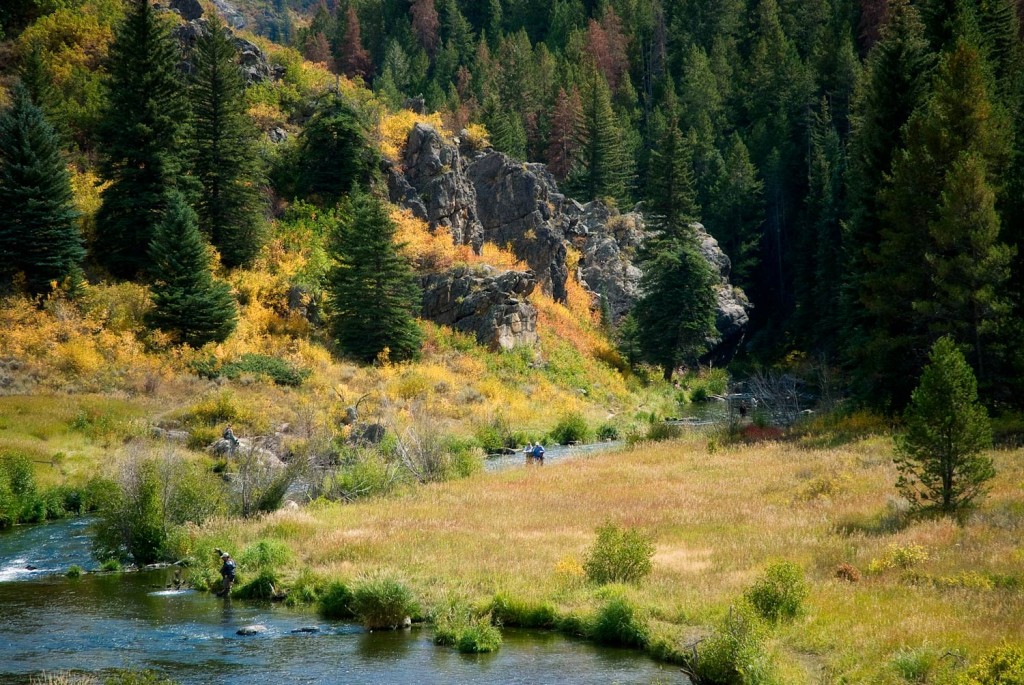
This story contains adult language. If you chose to read it, don’t complain.
IT TAKES A FEW MINUTES TO SET IN, WE ARE ON ONE OF THE GREATEST TROUT RIVERS IN THE WORLD AND THE FISH ARE GOING OFF AND WE ARE TOTALLY ALONE.
Wal-Mart, Frisco, CO, 7:45AM.
I lift a small canister from an end cap display. “Pods, got it.” It feels empty. Kent’s hands are full of Gatorade and dip.
“Get six of those bitches!” he tells me, gesturing towards the display with his chin.
“Dude, they’re like fifteen bucks.”
“OK, four.”
The Personal Oxygen Device, or POD, is designed for flat landers who come to the Rockies skiing and think they’re going to die of a heart attack when they get to the slopes. They are handy when you’re hiking in to a high mountain lake, but that’s not why we’re buying them.
Kent and I have been in Colorado fishing for almost two weeks and we’re pretty well acclimated. We have spent the last couple of nights with my friend Peter in Fair Play, at eleven-thousand feet, while we fished the Platte. Today we’re starting the twenty-four hour drive home. The Pods are for the road.
We’ll wait until we get close to sea level, maybe Saint Louis, and suck them down quick for a legal high. We’ll get our blood-ox way up, put on White Zombie and crank it up until the door panels pop off. It’s what I imagine meth is like and it breaks the drive up nicely.
As I pull on to I-70 Kent is thumbing through the map. It’s just reading material at this point. We both know our way around Colorado pretty well. The Gazetteer is mostly for identifying public land and finding camp sites. “what do you know about the Yampa?” he asks.
“Never fished it, supposed to be awesome.”
“Well, what the fuck, why haven’t we fished it?”
“I don’t know, time I guess. It’s all the way up in Steamboat.”
Our eyes lock for a minute and we both dig into our pockets for cell phones as I exit for highway nine at Dillon. Moments later our wives are both getting the news that we will not be coming home today. I imagine they are used to it.
Kent searches the map for camp sites while I do some last minute research on the iPhone before we lose signal, all at seventy miles per hour. It’s not a well-laid plan. It’s not a plan at all. If we’d known we were fishing we would have driven the night before. If we’d known what we were getting into we’d have been on the water before sun up. At this point we are still ignorant but we know we are in a hurry.
The drive from Dillon to Steamboat Springs is beautiful. North on highway nine past the green mountain reservoir to Kremling, then west on forty over Rabbit Ear pass and down to Steamboat. It’s high arid country dotted with small reservoirs and abandoned, sun bleached barns and houses. The occasional ranch gate signals that people have not given up on it all together.
We make a quick stop in town for some flies, food and local advice, then head for the campground at Stagecoach Reservoir. We grab a camp site and toss our tents up in a hurry and we are in the parking lot on the river by 11:30. It’s not a happy sight.
Read More »Saturday Shoutout / Captain Jack

IT’S NO COINCIDENCE THAT SO MANY OF MY FAVORITE FLY FISHING FILMS BEAR THE NAME CAPTAIN JACK FILMS.
Jako Lucas always seems to be right out on the edge of the fly fishing horizon. Whether it’s Yellow Fish in Africa or Atlantic Salmon in Russia there’s a magic to these film that transports the viewer. I get on the Captain Jack Vimeo page and hours just melt away.
I ran into Jako at the IFTD show in Orlando this year and he shared three recent films he’s been working on. I though I’d share them with you here. I willing to bet you’ll enjoy them as much as I do.
Read More »My Favorite Strike Indicator: Video
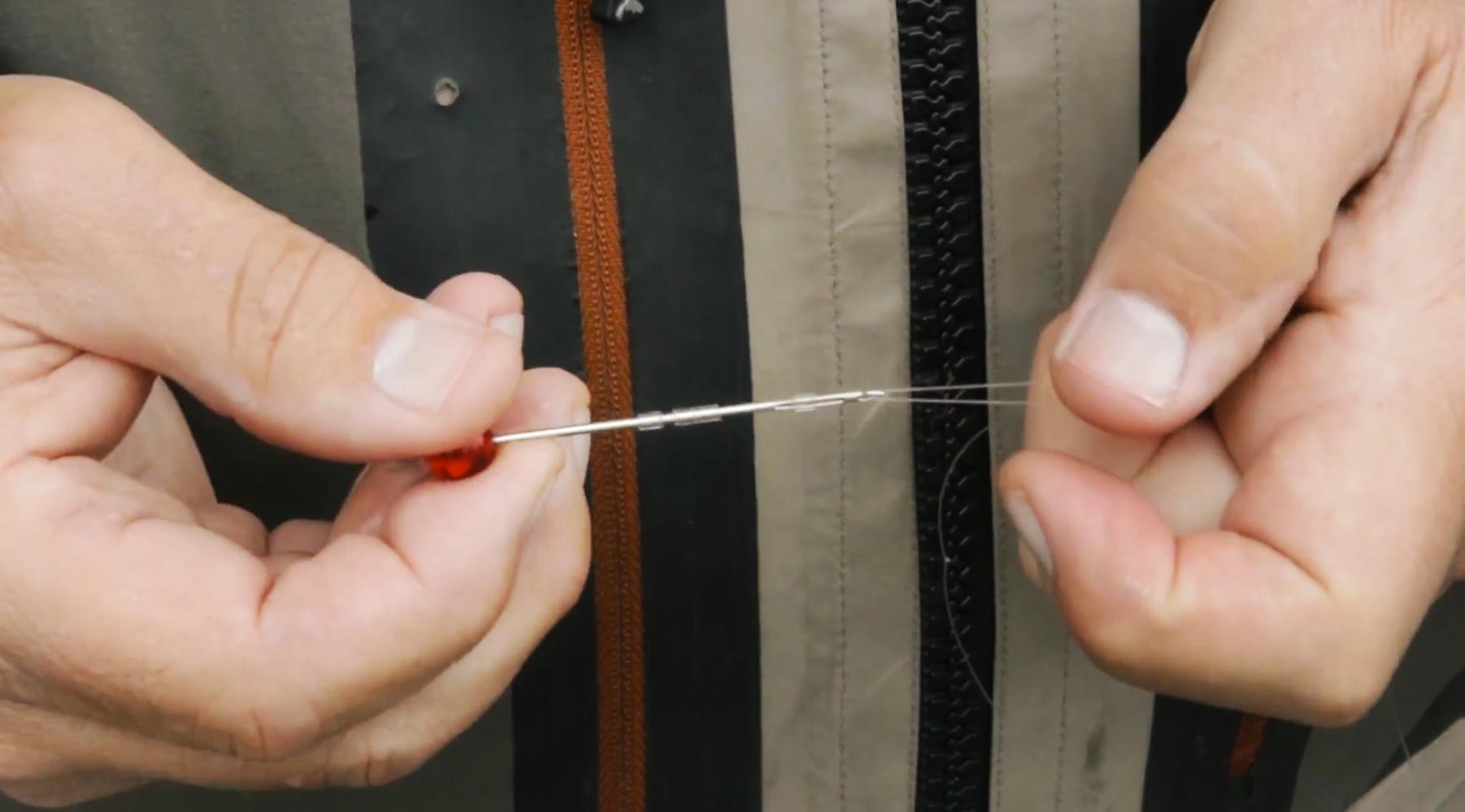
I don’t always fish an indicator, but when I do…
It’s the New Zealand Strike indicator. I love these little wool indicators. They are the best I’ve ever used. They’re super sensitive, easy to use and they don’t kink up your leader. The thing I love the most about them is they give you a more natural drift than a bobber. You can even let them sink in deep runs and still see the strike. Sinking your indicator gives you the most natural drift you can get with an indicator.
In case you’re wondering, I don’t get any kind of sponsorship from the company. This sounds like a plug, even to me, but this is just a tool I love and I think you’ll love it too.
WATCH THIS VIDEO AND LEARN HOW TO USE THE NEW ZEALAND INDICATOR.
Read More »A Closer Look / The Large Mouth Bass
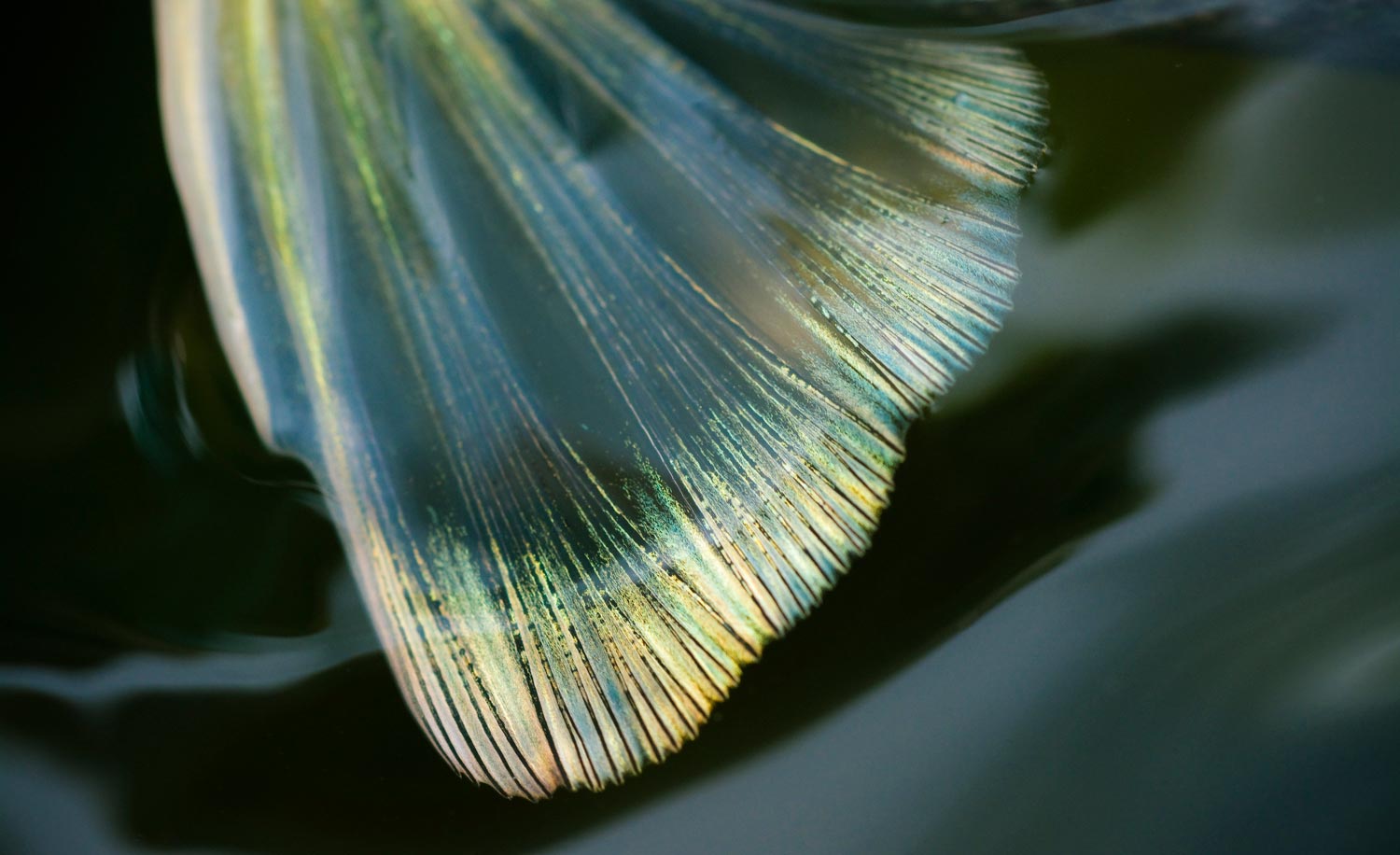
I’M GUILTY.
I have called them ugly fish. I have shown a lack of interest in bass largely due to their color palette. Then, just the other day I noticed the fin on this large mouth.
I’m a big enough man to admit when I’m wrong.
Read More »Use Old Plano Boxes For Bulk Fly Storage

Of all the thousands of dollars of bass fishing gear that I’ve accumulated over the years there’s very little of it that I can find a use for in my fly fishing today. Well, I could probably find a way to use some of it, but I’d definitely get bashed for it by my friends. My Plano tackle boxes, however, have proven to be very useful for me in my drift boat and when I’m traveling across the states on my fly fishing trips. I can load up one Plano box for my drift boat and I’m good for the day, and if I’m traveling out west, I often use one to throw all my big dry fly patterns or streamers in, so I don’t have to keep up with several smaller fly boxes during the trip. Every morning I’ll take out what I need and stow them in one or two fly boxes that I can carry easily with me on the water.
Read More »Choosing A Premium Fly Rod

By James Buice
The waggle. We all do it.
When you walk into a fly shop looking for that new rod (and yes folks, don’t even think about buying a rod before you cast it), the first thing you do after picking a prospective candidate from the rack is the waggle. Shaking the rod to check the flex, or stiffness, or…whatever. Some check the rod by placing the tip on the floor and observing the deflection. Some even hold the rod tip about a foot off the floor and raise the rod upward quickly to see if the tip touches the ground to see if the wand in question is “a fast or slow action.” Really!?!
Bottom line is no matter what you do in the confines of your favorite fly shop, you’re not going to be capable of making an educated rod buying decision until you line it up and “sling some string” as the kids say. But, there is a lot more to it than just casting blindly in a parking lot or casting pond. Have a game plan; a succinct list of criteria you deem necessary based on the rod’s purpose, your casting style, the type of gamefish you’ll be pursuing, and a realistic scenario in which the rod will be put to use.
THE LONG BALL DOES NOT ALWAYS WIN THE GAME
Having worked in a fly shop for years, I saw the same thing pretty much every time someone took a rod outside to cast. They would strip off all of the flyline at their feet and proceed to cast as much of it as possible. This would inevitably turn into the customer typically throwing tailing loops, snapping back casts, and throwing their arm out in an attempt to get the greatest distance they could muster. More accomplished casters would land the entire line straight, with graceful loops. This would be the extent of the test casting session.
“It threw the whole line.” “Wow, that rod has some power!” or “Feels like it doesn’t want to cast much past eighty feet.”
Great. These customers, no matter what their casting prowess, just showed their ability in casting a rod in parking lot for distance. Know what this told them about how the rod would fish in an actual, real life scenario? Zero. Zip. Nada. Sure it’s cool to bomb a long 100 footer, but aside from some very limited angling scenarios, simply throwing the entire fly line is about as useful as only practicing basketball shots from center court.
When you’re out shopping around, get the long cast out of your system and then focus on what really matters. Pick out a few spots on the ground at varying distances. If the shop has hula-hoops or something to use as a target, all the better. Place these at various distances ranging from 80’ to 10’. If it’s a trout pole you’re after, back it off to around 50 or 60 feet since you typically cannot control drag and fly line drift much past that in a river due to current breaks and such. This will put you in the ‘realistic’ casting ranges you’re going to encounter 99.9% of the time.
Now, don’t start out false casting and try to hit your targets. Begin each cast
Read More »Sunday Classic / Use Birds to Quickly Locate Bait and Schools of Fish
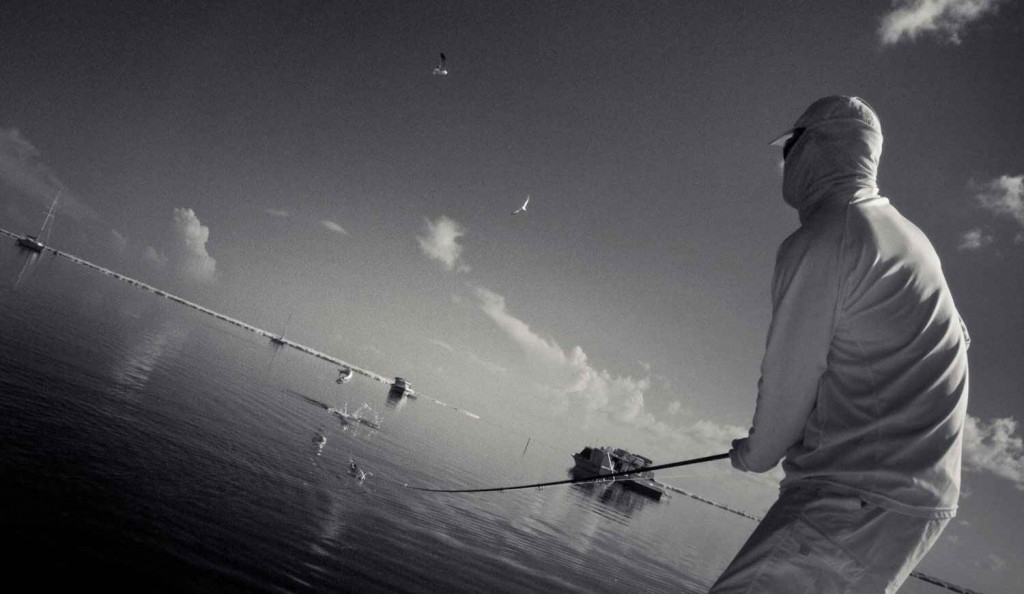
Certain times of the year in both freshwater and saltwater, anglers can use flocks of actively feeding birds to locate large concentrations of bait and fish. This was the case during my recent fly fishing trip with Capt. Joel Dickey. First thing, early in the morning, we’d run a wide sweeping perimeter with the boat, as we searched for seagulls on the feed. Binoculars weren’t a necessity but they allowed us to be more efficient by eliminating large areas of water that would otherwise be too far off for the naked eye. Being patient, continuing to cover water, and keeping confidence were the key factors in us successfully locating feeding birds. Be prepared for it to take a little while some days. For us, each morning it took a little while to find the birds, but eventually things fell into place with each scouting attempt. As the sun begins to rise over the horizon, it creates a perfect contrast of light that turns seagulls a bright neon white. You’d be surprised how far off you can pick out feeding birds this time of day. Any birds you find on the water means there’s probably bait and fish near by, but when you find diving birds in good numbers, you know there’s a feeding frenzy in progress. I’ve used birds many times in the past to locate schools of striped bass on my local reservoirs, but this saltwater trip was my first time using seagulls to locate tarpon. The seagulls and tarpon were feeding on a shrimp die off, that happens during the hottest times of the year in the evenings and at night. During these periods photosynthesis is not taking place, and with the lack of wind, oxygen levels in the water dropped below average. I have to say it … Continue reading
Read More »Saturday Shoutout / Rich and Poor Trout Streams
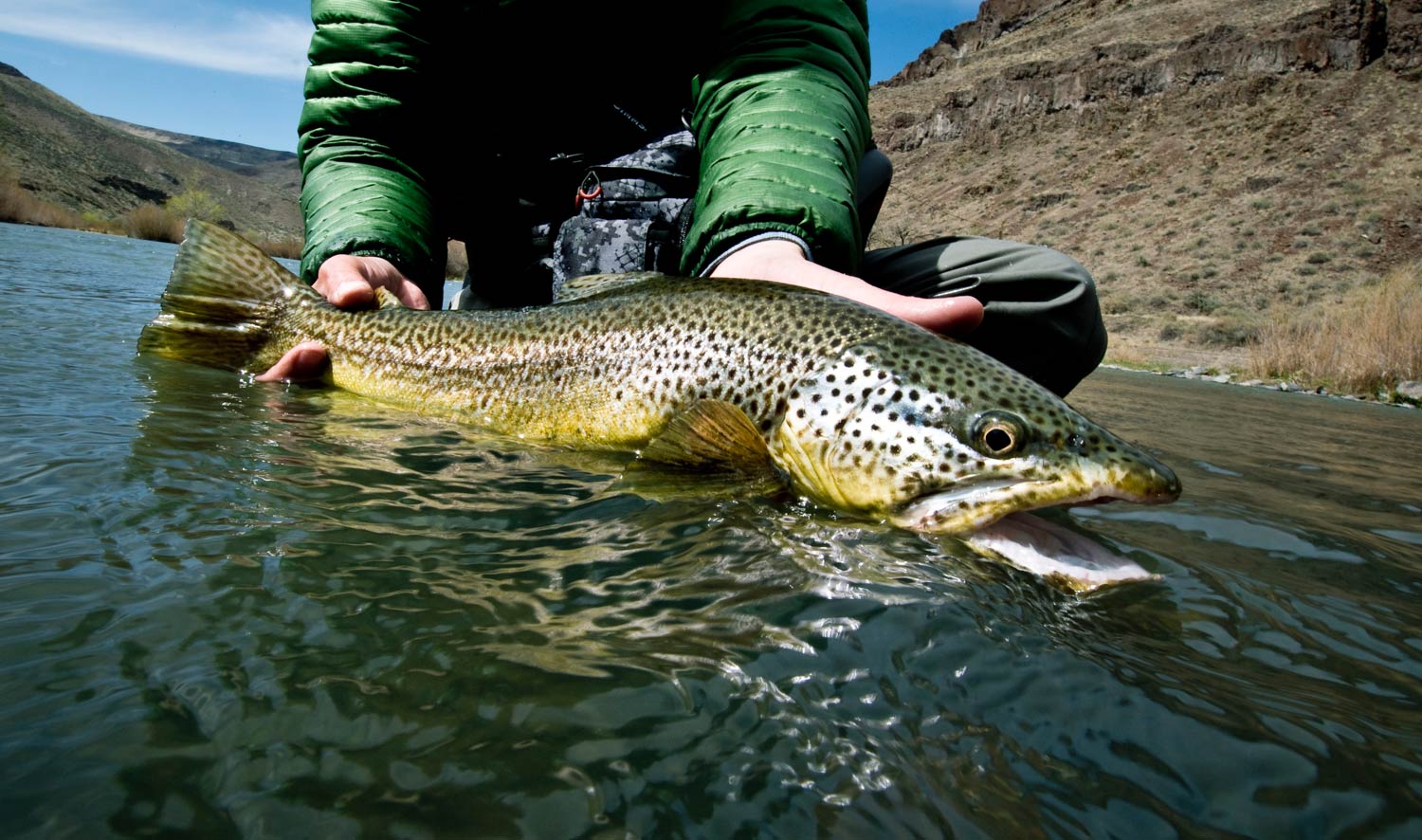
Read this now!
This tail of two trout streams, written for Midcurrent by Tom Rosenbauer, is quite simply of of the best and most informative pieces of writing, on the subject of trout fishing, which I have ever encountered. It’s rare that you will have the opportunity to expand you knowledge of trout and their habitat so profoundly in one sitting.
There are few folks who speak as knowledgeably about trout as Tom. This is an article you don’t want to miss.
Check out, Rich And Poor Trout Streams
Read More »